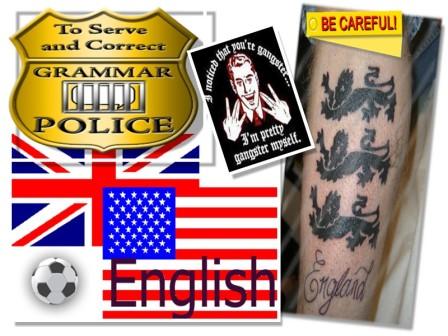The British Government
The System of Government
Britain is a parliamentary democracy with a constitutional monarch, Queen Elizabeth II, as head of the State. The British constitution, unlike those of most countries, is not set out in a single document. Instead it is made up of a combination of laws and practices which are not legally enforceable, but which are regarded as vital to the working of government.
The Monarchy
The stablility of the British government owes much to the monarchy. Its continuity has been interrupted only once (the republic of 1649-60) in over a thousand years.Today the Queen is not only the head of State, but also an important symbol of national unity. Her complete official royal title is 'Elizabeth the Second, by the Grace of God of the United Kingdom of Great Britain and Northern Ireland and of Her other Realms and Territories Queen, Head of the Commonwealth, Defender of the Faith', but she is usually referred to as Her Royal Highness or Queen Elizabeth.According to the law the Queen is head of the executive branch of the government, an integral part of the legislature, head of the judiciary, the commander-in-chief of all the armed forces of the Crown and the 'supreme governor' of the established Church of England. While that sounds like a lot of responsibility, the real power of the monarchy has been steadily reduced over the years to the point where the Queen is uninvolved in the day-to-day operation of the government. She is impartial and acts only on the advice of her ministers.The Queen, the Queen Mother, Prince Charles and the other members of the royal family take part in traditional ceremonies, visit different parts of Britain and many other countries and are closely involved in the work of many charities.
Parliament
Parliament, Britain's legislature, is made up of the House of Commons, the House of Lords and the Queen in her constitutional role.The Commons has 651 elected Members of Parliament (MPs), who represent local constituencies. The House of Lords is made up of 1,185 hereditary and life peers and peeresses, and the two archbishops and the 24 most senior bishops of the established Church of England.The center of parliamentary power is the House of Commons. Limitations on the power of the Lords (it rarely uses it power to delay passage of most laws for a year) is based on the principle that the Lords, as a revising chamber, should complement the Commons and not rival it. Once passed through both Houses, legislation requires the Royal Assent to become law.Parliament has a number of ways to exert control over the executive branch. Parliamentary committees question ministers and civil servants before preparing reports on matters of public policy and issues can be debated before decisions are reached. However, ultimate power rests in the ability of the House of Commons to force the government to resign by passing a resolution of 'no confidence'. The government must also resign if the House rejects a proposal so vital to its policy that it has made it a matter of confidence. The proceedings of both Houses of Parliament are broadcast on television and radio, sometimes live or more usually in recorded and edited form.
General elections to choose MPs must be held at least every five years. Voting, which is not compulsory, is by secret ballot and is from the age of 18. The simple majority system of voting is used. Candidates are elected if they have more votes than any of the other candidates, although not necessarily an absolute majority over all candidates.
Political Party System
The political party system is essential to the working of the constitution. Although the parties are not registered or formally recognized in law, most candidates for election belong to one of the main parties. Since 1945 eight general elections have been won by the Conservative Party and six by the Labour Party. A number of smaller parties have national and local organizations outside Parliament, and are also represented in local government.The Government is formed by the party with majority support in the Commons. The Queen appoints its leader as Prime Minister. As head of the Government the Prime Minister appoints about 100 ministers. About 20 ministers make up the Cabinet, the senior group making the major policy decisions. Ministers are collectively responsible for government decisions and individually responsible for their own departments. The second largest party forms the official Opposition, with its own leader and 'shadow cabinet'. The Opposition has a duty to challenge government policies and to present an alternative program.Policies are carried out by government departments and executive agencies staffed by politically neutral civil servants. Over half the Civil Service, about 295,000 civil servants, work in over 75 executive agencies. Agencies perform many of the executive functions of the government, such as the payment of social security benefits and the issuing of passports and drivers' licences. Agencies are headed by chief executives responsible for their performance and who enjoy considerable freedom on financial, pay and personnel matters.
Freitag, 5. Dezember 2008
Abonnieren
Kommentare zum Post (Atom)





Keine Kommentare:
Kommentar veröffentlichen